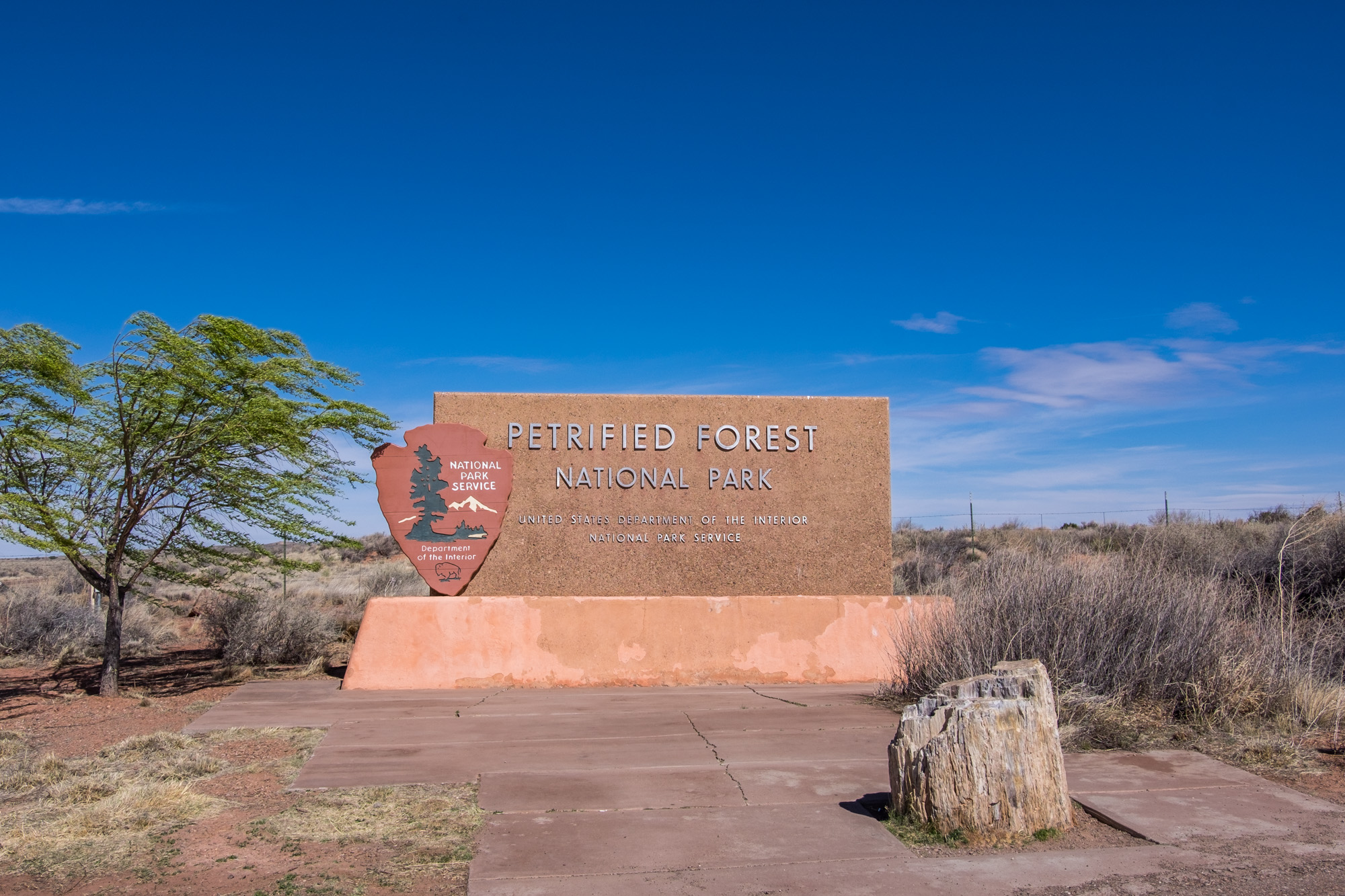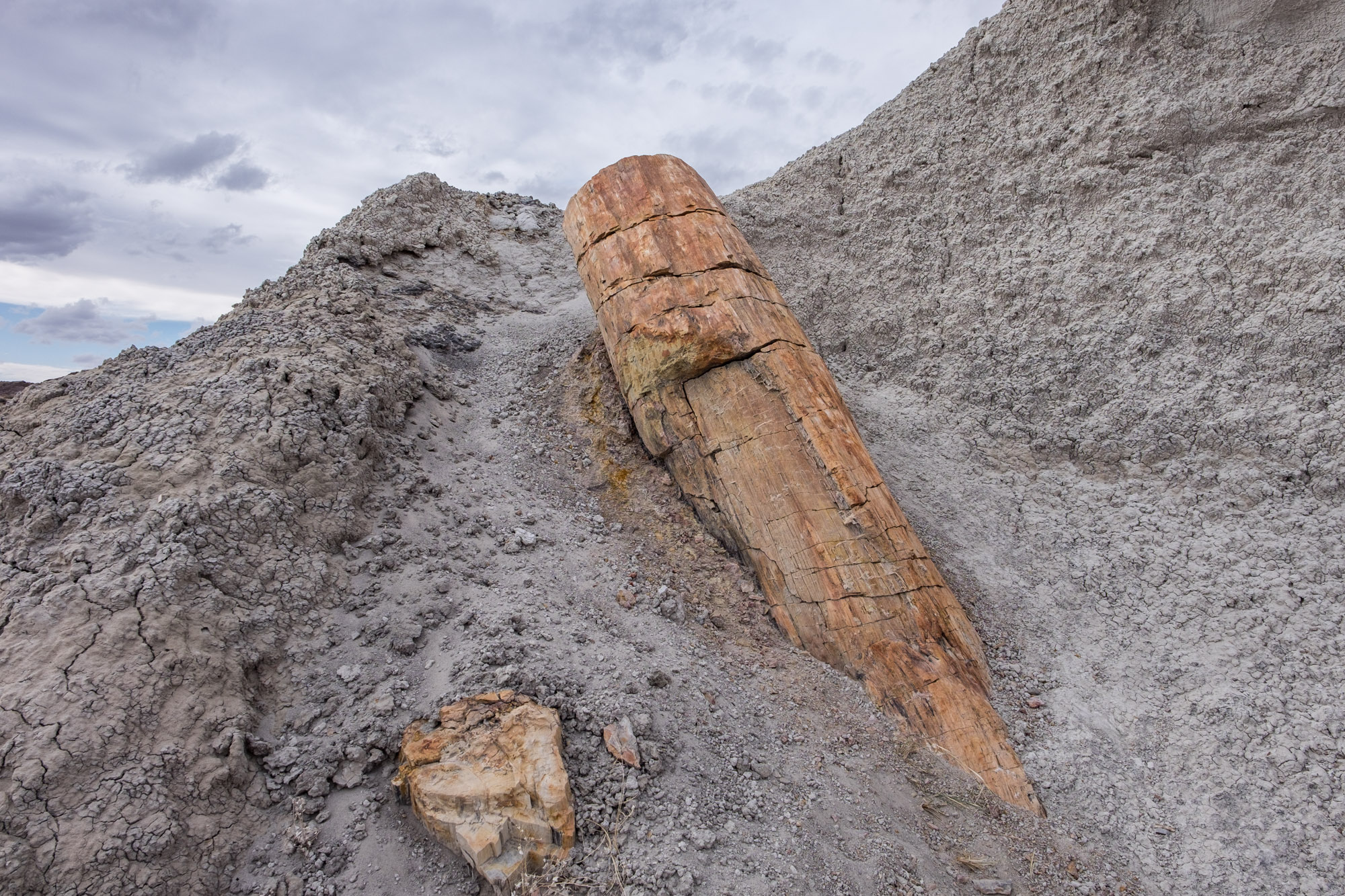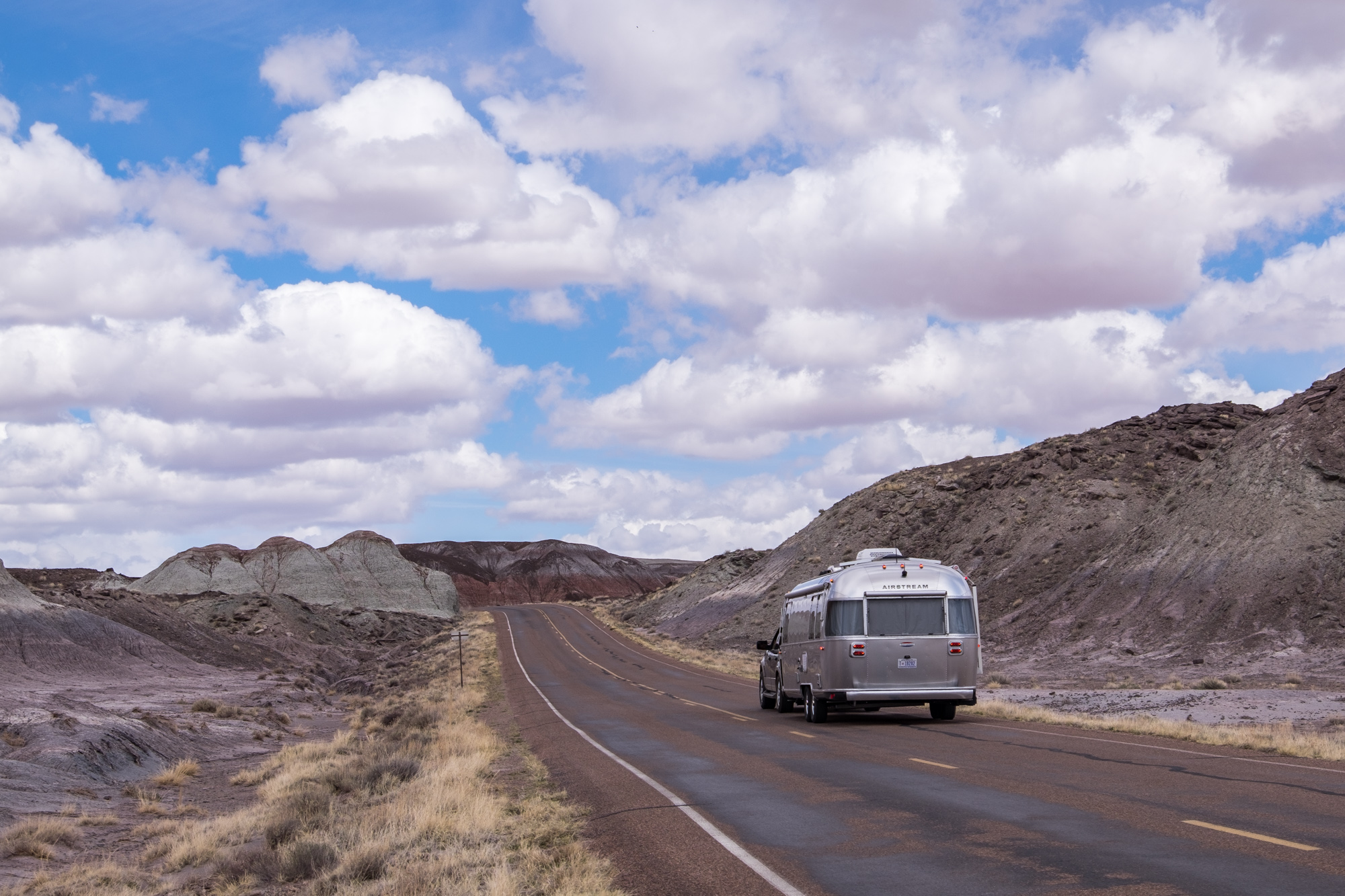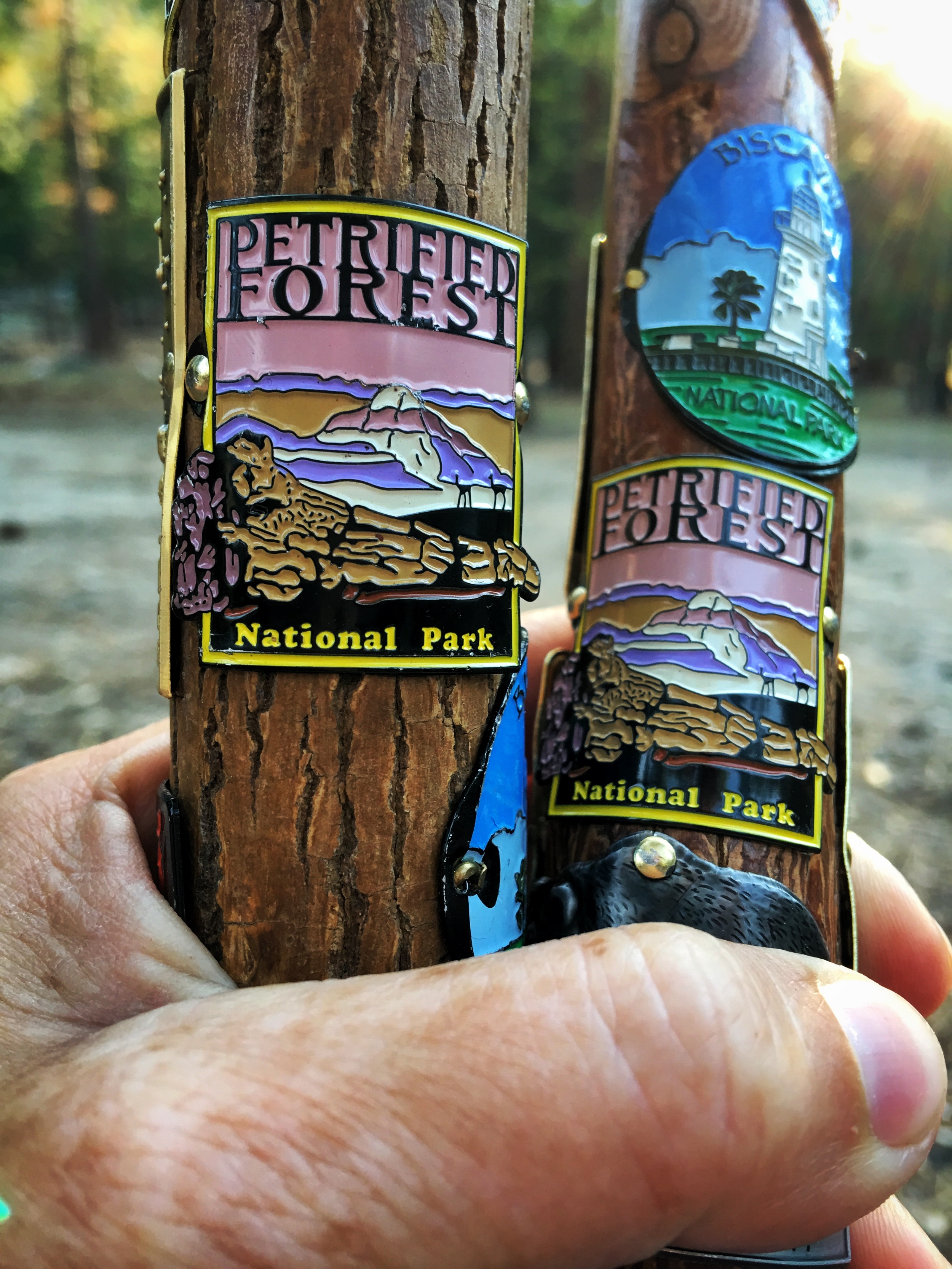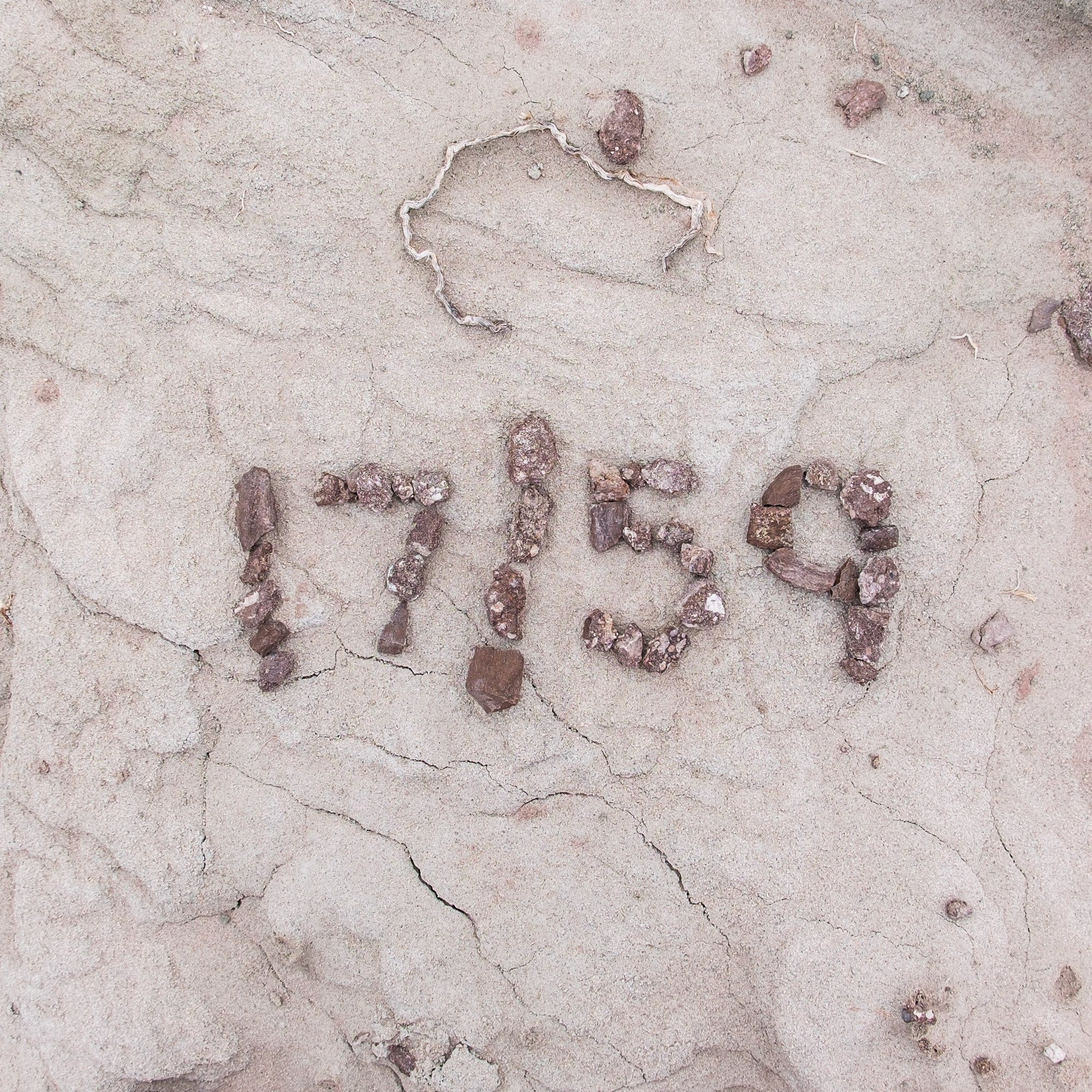Petrified Forest National Park, Arizona, USA | Park 17/59
“An enchanted spot...to stand on the glass of a gigantic kaleidoscope, over whose sparkling surface the sun breaks in infinite rainbows. ”
Our Prehistoric Playground: Petrified Forest National Park
A 'typical' piece of stunning petrified wood lays in its hundreds-of-millions-of-years-old resting place.
I’m not going to lie and say that either of us had ever heard of Petrified Forest National Park in Arizona until we started this project and plotted it out on our route. Yet we find ourselves mentioning it over and over again when asked which sleeper parks have mesmerized us so far this year. With about 645K visitors annually, it is on the quieter side in terms of visitation (and why I refer to it as a “sleeper park”) whereas Death Valley, for example, welcomes more than one million visitors per year.
It isn’t the colorful landscapes, the winding trails, the fresh air, or even the wide open spaces that makes the petrified forest so interesting—though it offers all of those things. Petrified Forest is home to the world’s largest collection of petrified wood. Its lifecycle began 225 million years ago when an ancient forest was buried beneath a river system where it laid dormant for millennia. Fast forward to 60 million years ago—that is when the Colorado Plateau began uplifting to expose the trees to oxygen, fracturing it into large pieces that lay upon Earth today for us all to go and see. It’s amazing to look at. The exterior appears just like any wooden tree bark does, but when you touch it, it is the smoothest, hardest material you’ve ever felt. Flip it over and you’ll see a vibrantly colored, ornately designed interior made of quartz that glints with brilliance in every shift of the light. Perhaps most remarkably is that anyone can pick up a piece and examine the effects of wood exposed to the forces of nature spanning millennia. Wrap your head around that for a moment—you can hold in your hand a piece of Earth that is 225 million years old. That alone is incredible.
A spectacular sunset at Blue Mesa.
But the wonder doesn’t stop there.
There are larger areas in the park to observe that serve as a landscape for the petrified wood to lay upon. The north side of the park is home to colorful badlands at the Painted Desert (stretching all the way to the Grand Canyon); and Blue Mesa, where we were the most enchanted. Why the blue, purple, and ivory sculpted hills with toppled pieces of quartz lying in the sprawls of them is not one of the most storied natural places on the planet is beyond us. There are both petroglyphs and ancient ruins in several areas of the park that tell the story of primitive cultures and peoples. And there is wind—amazing wind that continues to erode Earth, exposing more wood and continuing to shape what is already there. Like all of the parks, once we dug in and learned more about the reason the park was protected in the first place, we wanted to stay much, much longer.
Petrified Forest in Arizona is the only national park where you can plant your feet on America's famed historic Route 66.
If history and science isn’t your thing, there is another unique draw here—this is where you can get the best of American kitsch while stepping foot onto the Mother Road: America’s historic Route 66. Route 66 in its original form is no longer in existence, but at Petrified Forest, you can visit the only section of it existing inside of a national park. Nearby in the town of Holbrook, Joe & Aggies café serves up great Tex-Mex food and classic on the road pics that satisfy the photographic needs of any road tripper. Just around the bend from Joe & Aggies lives the classic Wigwam Motel – on the National Register of Historic Places – providing a glimpse into the mid-20th century golden age of travel. For those looking for a true and classic American road trip experience, a drive beyond Flagstaff to this area is a must.
Route 66 is a classic destination that all should want to visit at least once in their lives. But the Mother Road won’t transport your minds eye to a place and time where ancient birds flew before dinosaurs roamed the planet hundreds of millions of years ago… for that experience, you’ll want to visit Petrified Forest National Park. This is one of those places where time and age is your companion. One breath in and one look out and you can sense – you can really feel – the tale of prehistoric life on Earth. It is our prehistoric national park. Amazing!
“Quite a forest of petrified trees was discovered today...they are converted into beautiful specimens of variegated jasper. One trunk was measured ten feet in diameter, and more than one hundred feet in length...”
Quotable Images
Wally the Airstream found his kicks on Route 66!
America's Historic Route 66
At Petrified Forest, we found ourselves in the only national park where you can also find America's historic Route 66 within its boundaries – a little road trip frosting to top off our great adventure this year.
Visit the Stops Along The Road section of our website to see some photographic super-kitsch of the Wigwam Motel on Route 66 in Holbrook, Arizona... but first, have a quick read of the italicized text below about the Mother Road direct from National Park Service literature – we promise, you won't be bored for even one second...
The Wigwam Motel in Holbrook, Arizona.
Considered by many as the Mother of Transcontinental Highways, Route 66 is a quintessential representative of 20th century American history and culture. Commissioned in 1926, the road was unique among other highways with a catchy tune that was ideal for promotion efforts, and with a unique arcing path across the country. Renowned as the shortest all-weather route connecting the industrial Midwest to the rural southwest, it helped facilitate the unprecedented transfer of ideas, goods, and people across the country.
Traveling through Illinois, Missouri, Kansas, Oklahoma, Texas, New Mexico, Arizona, and California, it also served as a major corridor for migrating dust bowlers in the ’30s; for important WWII military functions in the ’40s; and for thousands of families in the ’50s during the emergence of “vacation culture.” Roadside architecture and businesses flourished, changing forever the history and character, and lives of the towns through which the route passed. As well, the arts played a critical role in immortalizing the road through literature, song, and film, which served to elevate the road to a phenomenal, pop-culture status which persists to this day.
Ironically, it was the popularity of automobile travel that ultimately led to the highways demise through the construction of limited-access interstates in the 1970s. With the slow, incremental opening of the interstates, travel gradually shifted away from the towns and main streets of Route 66 passed, until the highway was officially decommissioned in 1985. Beloved by many, however, the public demanded that the road and its history be kept alive, and preservation and tourism movements have since flourished. Almost 80 years since its birth, and nearly 20 years since its decommissioning, Route 66 remains one of the most revered, beloved, and sought out historic roads in the world.
Photographing Americana on Route 66 on the way to Petrified Forest National Park in Arizona... Fujfilm Instax, Pepsi-cola, Ray Ban sunglasses, and America's favorite byway!
“It winds from Chicago to LA., More than two thousand miles all the way. Get your kicks on Route 66! ”
Fact Box
93,533 acres with more than half as dedicated Wilderness area
Official name: Petrified Forest National Park
Established: December 9, 1962 (established as a National Monument by President Teddy Roosevelt in 1906.)
Location: Northeast Arizona (the nearest town is Holbrook.)
How the park got its name: Petrified Forest was named after a wilderness of 225 million year-old trees that have, over time, turned into solid quartz.
The famed Painted Desert.
Iconic site in the park: The colorful Painted Desert that stretches all the way from the Grand Canyon is the best known landmark at Petrified Forest and it greets you right as you cross through the northern boundary of the park. It was given its name by Spanish explorers who thought the clay and mudstone badlands looked like a sunset painted onto the landscape. This landmark is a protected Wilderness area so you wont be exploring its interior by car (although there are view points that you can pull up to.) The best way to explore it is to head out on foot on a 1-mile unpaved loop trail where you can see the picturesque rim from a different vantage point. A must-see cultural stop nearby is at the 100-year-old Painted Desert Inn, where you can view, in real life, restored mural art created by famed Hopi artist Fred Kabotie.
Accessible adventure: At the south entrance of the park is the Rainbow Forest Museum, from where you can walk out the back door and onto a short, 1/4 –mile walk on the Giant Logs trail. This paved walkway meanders through seemingly endless deposits of colorful wood, and is the home to the largest piece of petrified wood in the park, called “Old Faithful” measuring 10 feet in diameter. The south end of the park is also where the highest concentration of petrified wood lives, so while the trail is short, your stay can linger because there is a lot to explore. Inside the museum lives a comprehensive exhibit detailing the area's prehistoric past.
Big adventure: Often times, the best way to get to know the heart of a park is to spend the night with it. There are no established campgrounds in Petrified Forest National Park, so to do this, you’ll want to pick up a free backcountry backpacking permit from one of the visitor centers and head either north to the Painted Desert wilderness or south to Tawa Point. These trails are no more than two miles out, allowing you time to get there, set up, and spend a long night under the stars.
Did you know?
John Muir, nicknamed "The Father of the National Parks," conducted one of the first excavations of petrified wood in the park.
Petrified Forest National Park has a world class fossil record with artifacts dating to the Triassic Period, 200 million years ago, before the Jurassic Period when dinosaurs roamed our home planet. The Triassic era is known as the "Dawn of the Dinosaurs."
Petrified Forest is home to fossils of massive crocodile-like creatures known as Phytosaurs, as well as remnants from 13,000 years of human history, including the remains of villages, tools, and grinding stones.
A petroglyph at Martha's Butte depicting the summer solstice.
Archeological relics prove that humans have lived in the area for more than 10,000 years.
Some of the trees in the park measure up to 200 feet – about the length of the wingspan of a 747 jet.
The iconic Newspaper Rock has more than 600 petroglyphs. According to the National Park Service, some are calendars, indicating the date of the summer solstice. There is a lookout and a telescope, though they are somewhat hard to see, but their existence is spectacular.
A visual tale of the quest of the Hopi Indians, painted by famed Hopi artist Fred Kapotie.
On the wall of the historic Painted Desert Inn you can visually wander along the path of the native American people in the area as depicted in a painting by famed Hopi artist, Fred Kapotie.
At this park, you will find yourself in Navajo and Apache counties.
Petrified Forest is the only national park where a segment of Route 66 exists.
Geocashing sites can be found on Route 66 in the national park.
This park practices "limited impact camping" to protect the fragile landscape, limiting camp group size to a maximum of 8 people.
The park closes at sunset, meaning you need to be on your way out of it right when the light gets great for photography. We applied for a research permit so that we could catch the blue hour at Blue Mesa. Another way to catch the pink sky at night from inside of the park is to get backpacking permits and camp out in backcountry.
A classic rock shop outside of the park boundaries sells real petrified wood that is legal to own. Independent concessionaires in the area such as Xanterra operate outposts where visitors can legally purchase the artifact, making theft of park-protected resources less attractive.
Leave nothing but footprints (but tread lightly!) Take nothing but memories and photographs. It is estimated that about 12 tons of petrified wood are stolen from the Petrified Forest every year. Theft of the ancient relics is an ongoing problem, regardless of the fact that it is illegal. Regulations are in place so that violators face monster fines if caught pocketing the artifacts. One look at the brilliantly colored and ornately designed wood and it's easy to see why anyone would want a piece of their own. The good news is, just outside of the park there are rock shops where one can legally purchase a piece to take home. How is this possible? The national park protects only 20% of the petrified wood found in the area and the rest is the property of private owners, the Navajo Nation, and the Bureau of Land Management. Interestingly, these park-adjacent stores are welcome by the National Park Service as they deter people from taking deposits found in the protected area. If that, as well as the idea that leaving the wood for for future generations to learn from and enjoy isn't enough, know that Navajo legend says that thieves of petrified wood are struck by endless bad luck.
A Proclamation, dedicating the Petrified Forest in Arizona as a National Monument; President Theodore Roosevelt, 1906.
For those of you interested in the legislation that enabled protection of the Petrified Forest as a national monument, you might like to have a look at this proclamation by President Theodore Roosevelt:
Dec. 1906—
WHEREAS, it is provided by section two of the Act of Congress, approved June 8. 1906, entitled, ''An Act for the preservation of American Antiquities" "That the President of the United States is hereby authorized, in his discretion, to declare by public proclamation historic land marks, historic and prehistoric structures, rind other objects of historic or scientific interest that arc situated upon the lands owned or controlled by the Government of the United States to be National Monuments, and may reserve as a part thereof parcels of land, the limits of which in all cases shall be confined to the smallest area compatible with the proper care and management of the object to be protected;"
And. whereas, the mineralized remains of Mesozoic forests, commonly known as the "Petrified Forest." in the Territon of Arizona, situated upon the public lands owned and controlled by the United States, arc of the greatest scientific interest and value and it appears that the public good be promoted by reserving these deposits fossilized wood as National monument with as much land as may be necessary for the proper protection thereof;
Now, therefore, I, Theodore Roosevelt, President of the United States of America, by virtue of the power in me vested by section two of the aforesaid Act of Congress, do hereby set aside as the Petrified Forest National Monument, subject to any valid and existing rights, the deposits of mineralized forest remains situated in Gila and Apache counties.




